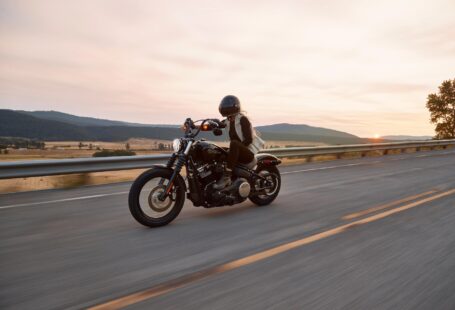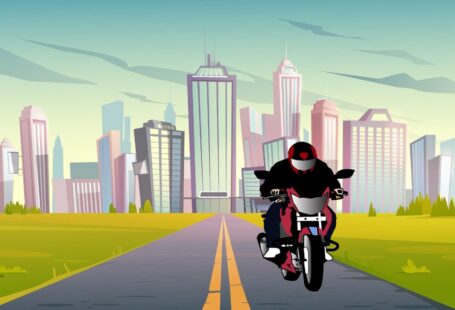Bill Tuman crosses the line on the last Indian motorcycle to race flat track, until now
Back in 1953 when an Indian motorcycle took its last turn around a flat track, there were probably more than a few people who thought they’d never see the company field a race bike again. Gone would be the longstanding rivalry of Indian vs. Harley Davidson, and with it the Indian Wrecking Crew of Bill Tuman, Bobby Hill and Ernie Beckman roaring down a packed dirt straight away at 100 mph winning one race after another.
Nearly 65 years later, the doubters have been proven wrong, and Indian’s return to the sport has given fans of flat track a return of a rivalry to look forward to. But the path to get here hasn’t been easy for the sport or Indian’s most recent owner, Polaris.
For decades flat track had been the most popular motor sport in the US, but by the 1980s fans began to lose interest, drawn instead to the crazy antics of motocross and the knee and elbow-down physics-defying MotoGP racers.
Flat track races are a loud, dirty, brawl on two wheels. Racers go handlebar-to-handlebar around the entire track, lap after lap. The races are mostly held on either half-mile or mile courses on hard-packed dirt. Horse racing tracks are sometimes used as a venue for the longer races.
Engines in the top category can’t exceed 750cc, there are no front brakes, the bikes can’t weigh more than 300 lb (136 kg), and the riders are more often than not built like horse jockeys.
On mile tracks, they’ll hit speeds of up to 120 mph (193 km/h) by the time they hit the left-hand turn. The bikes are slowed with a combination of downshifting, rear braking and an extended left leg.
For some, flat track is an acquired taste, but for a growing number of fans that are rediscovering the sport, it’s what racing motorcycles used to be – approachable, dangerous, and raw. Four-time Grand National Champion, Jared Mees describes it as “an unbelievable adrenalin rush.”
The increasing popularity of the sport means the timing is probably good for Indian’s return, but when Polaris bought Indian from Stellican Ltd. in 2011, a return to flat track racing of any sort wasn’t the first priority. Indian had gone through a combination of owners and mothballs over several decades, and the Polaris purchase was met with as much skepticism as promise. While Stellican had revived the brand name, it had produced and sold a limited number of bikes as the company attempted to turn Indian motorcycles into a premium (aka, pricey) brand only a few years before the great recession hit. Polaris had some work to do.
Before Polaris could even think of getting Indian back into racing, it had to establish a dealer network, design new bikes for public consumption, and prove it was up to the task of creating a bike that paid homage to Indian’s history while also being a more affordable and modern machine. The company’s only foray into motorcycle design and manufacture before had been the Victory line, which had established a reputation for performance and customer satisfaction, but not the American brand recognition of Harley Davidson.
But four years after Polaris took ownership of Indian, Steven Menneto, president of motorcycles, laid down the gauntlet – build a race bike capable of winning races, and you have less than two years to do it.
Gary Gray, product director for Indian, sheds some light on the process and why that timeline was a big deal.
“Most of these types of projects have a three-to-five year window, ” he told New Atlas. “There’s not only the design phase, but a lot of testing needs to happen before you can field a bike in a professional race. Some of us had experience starting from scratch when we designed the first Victory. So we had some idea of what it was going to take to get this done. But the timeframe still proved to be the biggest obstacle.”
“We started with the competition. The Harley Davidson flat tracker is probably the perfect bike for the half-mile races and the bikes Kawasaki fields do really well in the mile. I wanted to win a championship, and the only way we could do that was to design a bike that could do well in both types of races.”
Gray said he had as many as 10 to 15 people working with him on the project, but not all at once. Typically there were three to five core members, all with other full-time jobs within the company.
Once Gray’s team basically tore apart the competitors’ bikes, they used what they learned to design what would become the FTR750 – beginning with the engine and drive train. They chose a compact, liquid-cooled V-twin configuration with a four-speed transmission and only a couple of plates in the clutch. The engine sits in an adjustable chassis that can be set up for different track conditions and riders.
“We didn’t want to make the bike uncomfortable or only good at one thing. It had to be familiar and rideable, no matter who was going to get on it, ” Gray explained.
One of the people who had to get comfortable on the bike was Mees. He was riding a Harley Davidson before he joined Brad “The Bullet” Baker and “Flyin” Bryan Smith on the current Indian Wrecking Crew.
The three have taken a gamble by giving up prime positions with other OEMs and race teams to join a company that has never built, let alone raced, a flat track bike. The overarching question is why?
“I started hearing about what Gary and his team were working on and the excitement they had for the sport, ” said Mees. “So I called them and signed a testing contract to initially just give them some feedback. But once I got on the bike they had designed, I just knew I wanted to race it.”
Mees pointed out that testing a flat track bike isn’t easy. It’s not like guys who race motocross, who can basically build a course on a couple of acres. To test a flat track bike you need an actual track. So what Indian did was to get on every flat track course during last year’s season the day after each race.



